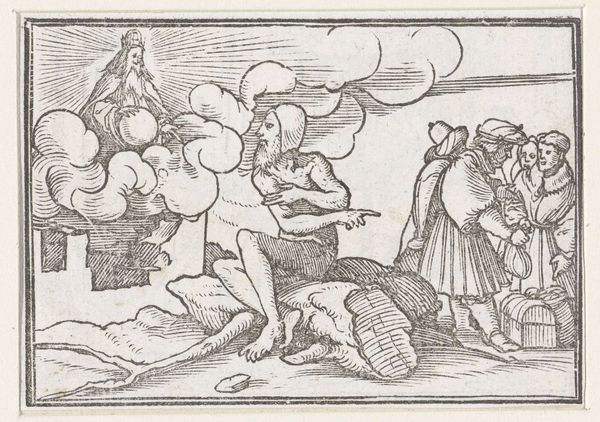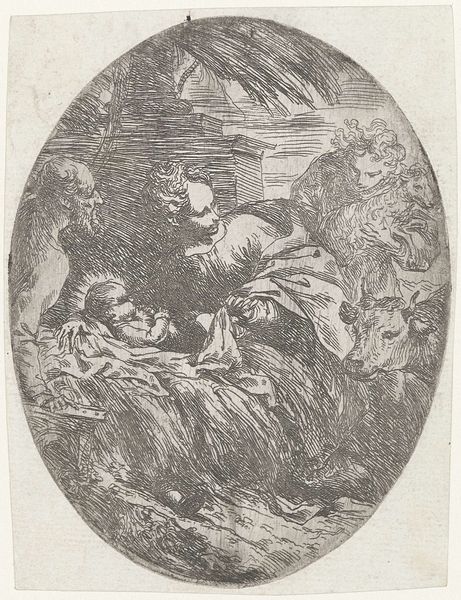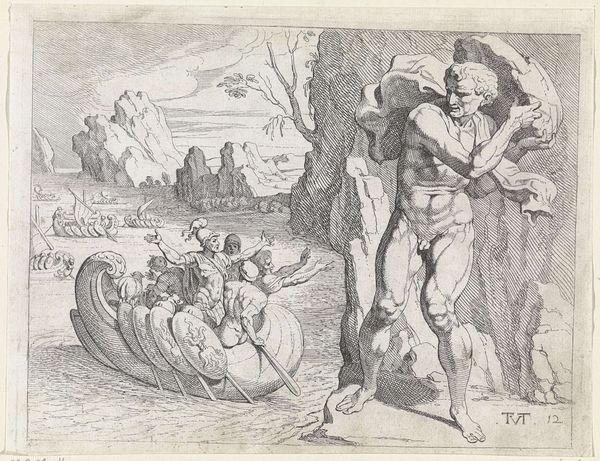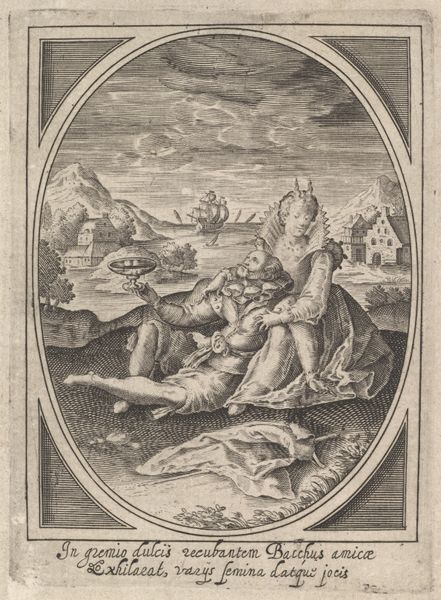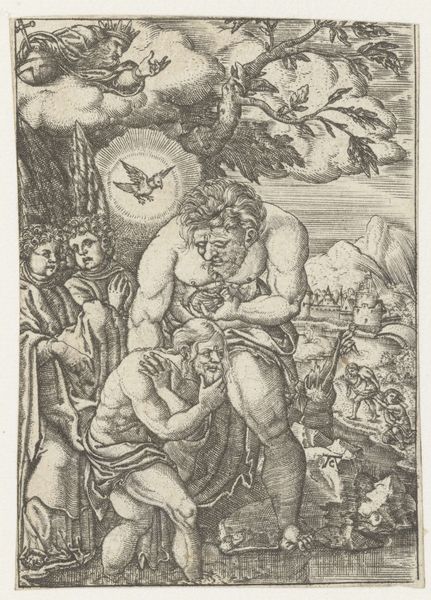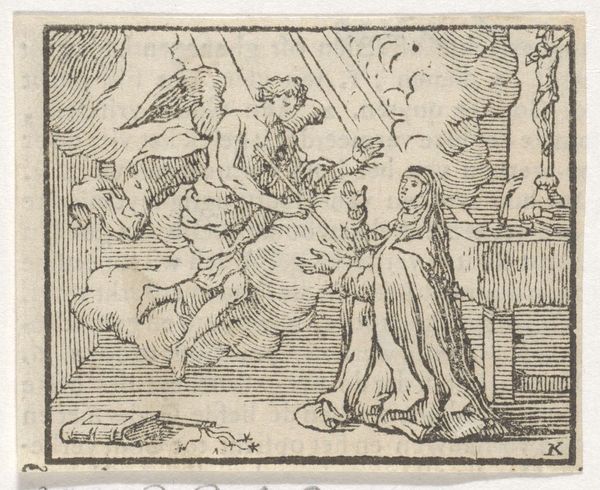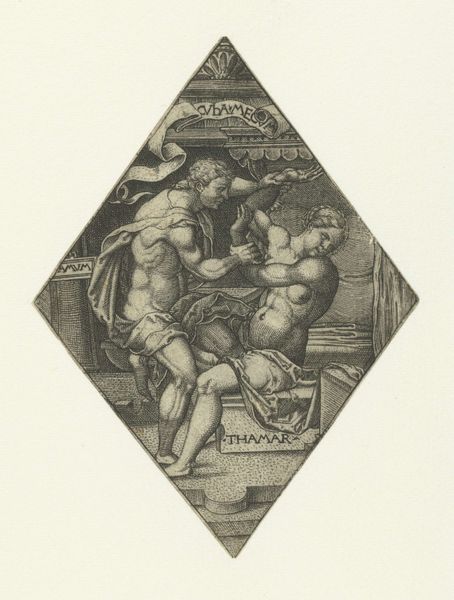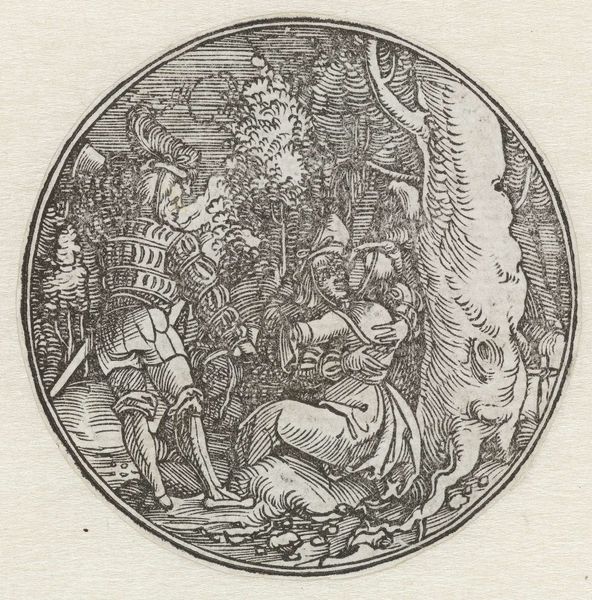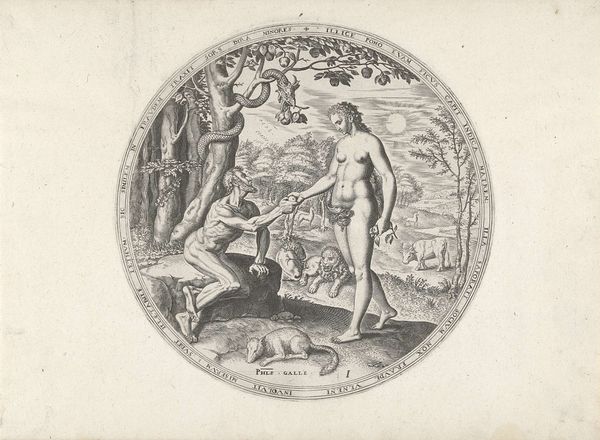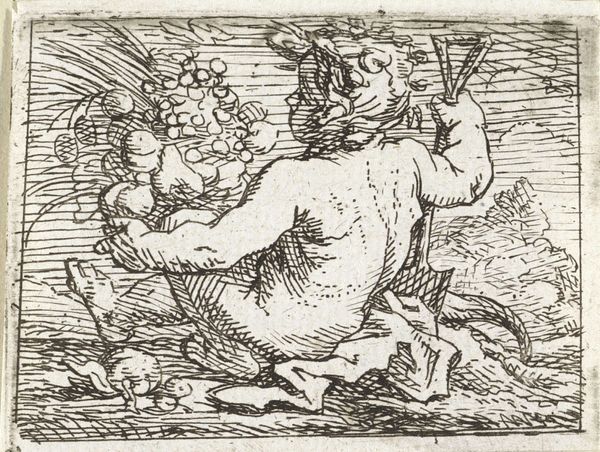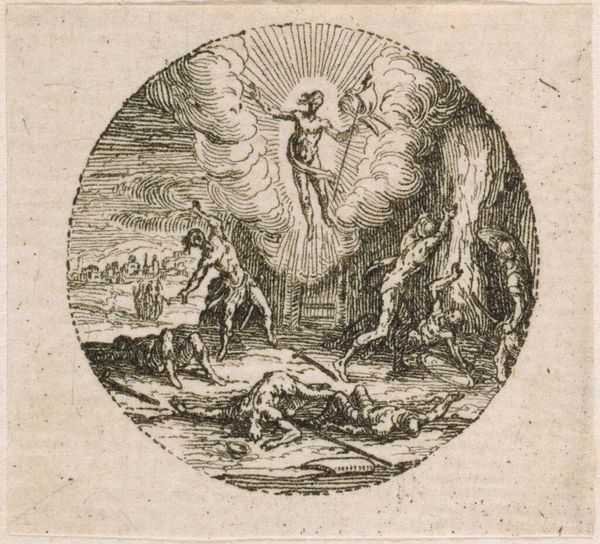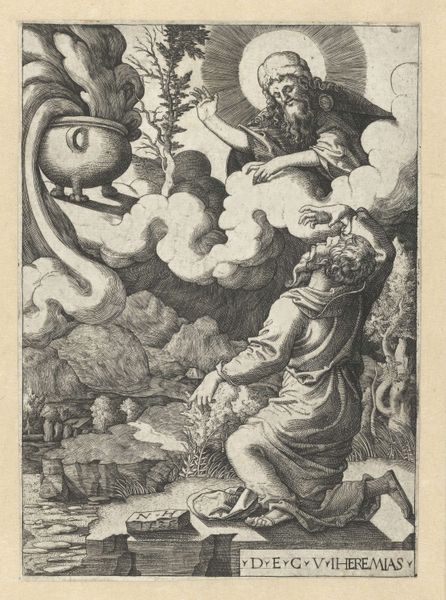
print, etching
#
allegory
#
baroque
# print
#
etching
#
genre-painting
#
nude
Dimensions: height 53 mm, width 62 mm
Copyright: Rijks Museum: Open Domain
Wenceslaus Hollar created this engraving of the repentant Mary Magdalene in 1658. Hollar was Bohemian, working in a period dominated by religious conflict, and he made his career moving between Catholic and Protestant centers. Consider the traditional representations of Mary Magdalene. Often depicted as a temptress, here she is shown in a state of penitence, a common theme in Counter-Reformation art. The cross and the open book allude to her devotion and spiritual transformation, while the pot references her past as a woman of worldly pleasures. The choice to focus on Mary Magdalene reflects the religious and social tensions of the 17th century, particularly the debates about sin, redemption, and the role of women. By studying prints and engravings like this one, alongside period pamphlets and religious texts, we can better understand the complex interplay between art, religion, and society during this turbulent era.
Comments
No comments
Be the first to comment and join the conversation on the ultimate creative platform.
